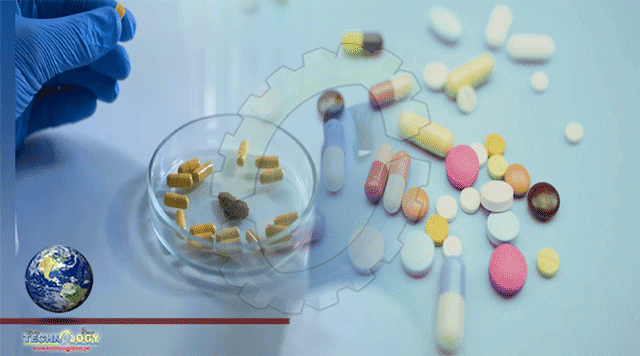Millions of people around the world lack access to necessary medicines. Exacerbating those health concerns is an increasingly widespread problem worldwide: counterfeit medications and pharmaceuticals.

The World Health Organization (WHO) found that “one in 10 medicines in low- and middle-income countries are estimated to be substandard or falsified.” In total, they estimate that at least “10% of global pharmaceutical commerce, or $21 billion worth, involves counterfeit drugs.” Part of the concern needing to be addressed is how easy it can be to purchase medicines online from unauthorized sources, and how difficult it can be to distinguish between real and fake drugs. And some counterfeits have even “infiltrated legitimate supply chains,” according to researchers at the Forensics and Innovative Technologies group in the Global Quality Analytical Science and Technology division of Bristol-Myers Squibb.
A global push to eradicate the health threats posed by counterfeit drugs is growing. Now, in a study published in the European Pharmaceutical Review, the Bristol-Myers Squibb team of scientists has demonstrated that hyperspectral imaging in the visible and near-IR (VNIR), as well as Raman spectroscopy, can effectively identify and classify several different types of counterfeit drugs.
All drug products, such as tablets, possess unique characteristic absorption and reflection of light in the VNIR spectral region of the electromagnetic spectrum. The researchers say that “only hyperspectral imaging can collect a detailed and specific fingerprint in this [VNIR] region at an extremely fast rate. The reflectance spectral fingerprint in the VNIR regions for each pixel of an image can create a map showing the quality of a given product. It can also accurately differentiate between pixels that might look the same to the human eye, but can actually be quite different.” For instance, some counterfeit pharmaceutical products may look visually authentic, but are actually chemically different. Hyperspectral imaging offers “an additional dimension of information in every single pixel of a pharmaceutical product to distinguish its quality.” Essentially, that spectral dimension helps to differentiate counterfeit medications from authentic ones.
In their study, the researchers created a calibration dataset with reflectance measurements from two tablets of authentic drug products as well as two to seven tablets from each counterfeit type. In testing 44 sample tablets, this calibration model correctly identified which were authentic and which were fake.
The researchers also employed Raman spectroscopy—specifically Fourier-transform (FT) Raman spectroscopy—in their study, demonstrating its ability to be a “successful screening tool.” They note that this technique can be used to study “fundamental modes of molecular vibrations using a monochromatic light”—a laser, the light from which interacts with a sample (in this case a pharmaceutical drug). “The scattered radiation is detected to gather information on the product under interrogation.”
In this study, a total of 153 tablets of four known types of counterfeits were analyzed with this method; the team collected 143 Raman spectra from all four counterfeit types, as well as 10 spectra from authentic tablets. This data, combined with other analyses, showed that this technique can be successfully used to classify counterfeits.
Ultimately, the researchers found that “once initial detection of different types of counterfeits for a given branded product is confirmed using Raman spectroscopy, VNIR hyperspectral imaging can possibly replace this and be implemented successfully for rapid detection of pharmaceutical counterfeits.”
Source: LaserFocusWorld
